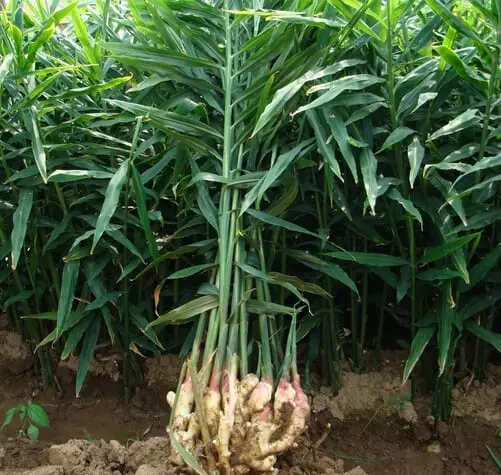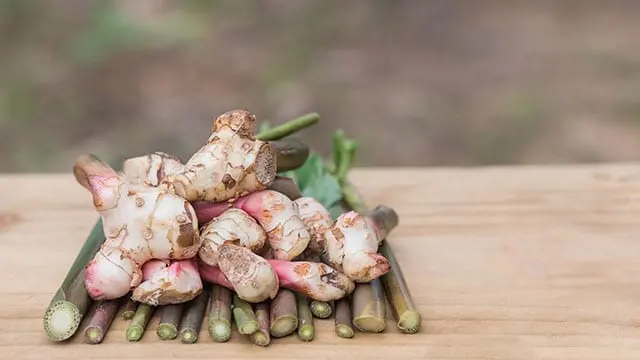Contents
Description
Galangal root is the most important seasoning in the cuisine of Southeast Asia. This plant is a relative of ginger, but unlike it, it is not as hot and has an additional, slightly perfumery aroma.
Galangal has thin, pale pink skin that often doesn’t even need to be peeled. Fresh root is most often used as an ingredient in soups, especially Thai ones. And dried is used as a spice, adding, for example, to sweet pastries.

How galangal differs from ginger
Galangal has a slightly thinner skin, with a slight pinkish tint, ginger is harsher in comparison with it. They are like two soldiers, only Galangal is a rookie, and Ginger is a seasoned old fighter. They also differ in taste, with galangal dominated by bright citrus notes.
If the taste of the fresh root is divided into components, then you can catch notes of eucalyptus, lemongrass, saffron, refreshing shades of pine resin. The aroma of dried galangal is similar to cinnamon. It tastes sweet.
What is the correct Tom Yam made of
There are many recipes, but a real tom yam will not work without a certain set of spices, which make it tom yam. And here the union of ginger and galangal is as important as the presence of lemongrass, chili, coconut milk and kafir leaves.
It is very important to cut the roots coarsely, two fingers thick, toss the kafir leaves whole and at the very end squeeze half the lime generously. Only lemon grass can be cut finely.
What other dishes include galangal

It goes well with garlic and onions, so it looks good in soups and meat dishes. In Indonesia, beef is stewed in thick coconut milk with chili, garlic, dried turmeric, fennel, ginger and galangal. As you can see, both roots meet here.
In India, galangal is put in soups and curries, chicken and fish are cooked with it. Asians add this spice to drinks. You can make a nice cooling tincture without ginger, although its presence will not hurt.
Since galangal has notes of pine needles, eucalyptus and citrus, you can add a small amount of eucalyptus and a little more orange or lime to the drink.
Cooking use
In Asian countries – Cambodia, India, China, Japan – flowers and buds are eaten. Europeans also have experience with the use of buds in cooking, such as unblown buds of capers. Only we are used to pickling them, and in Southeast Asia, the buds and even galangal flowers are eaten fresh, enjoying their invigorating taste.
How to store

The fresh root is wrapped in paper and stored at a low above zero temperature. Unfortunately, it still stays fresh for a maximum of 10-12 days. And it is best used within the first seven days.
Some people prefer to freeze these roots. Someone is more willing to buy dried or ground. If the recipe you are cooking contains other spices besides galangal root, it is best to add the powder last to the food so that it does not get lost.
It should be remembered that the taste of fresh galangal differs from dried – some notes go away, sweetness and spice are felt more.










